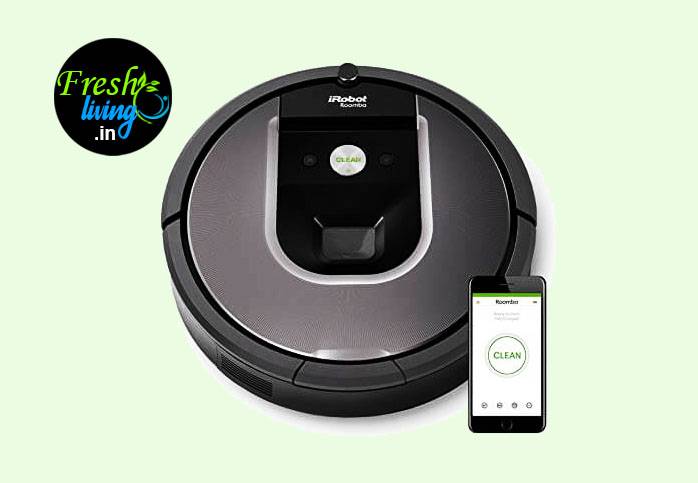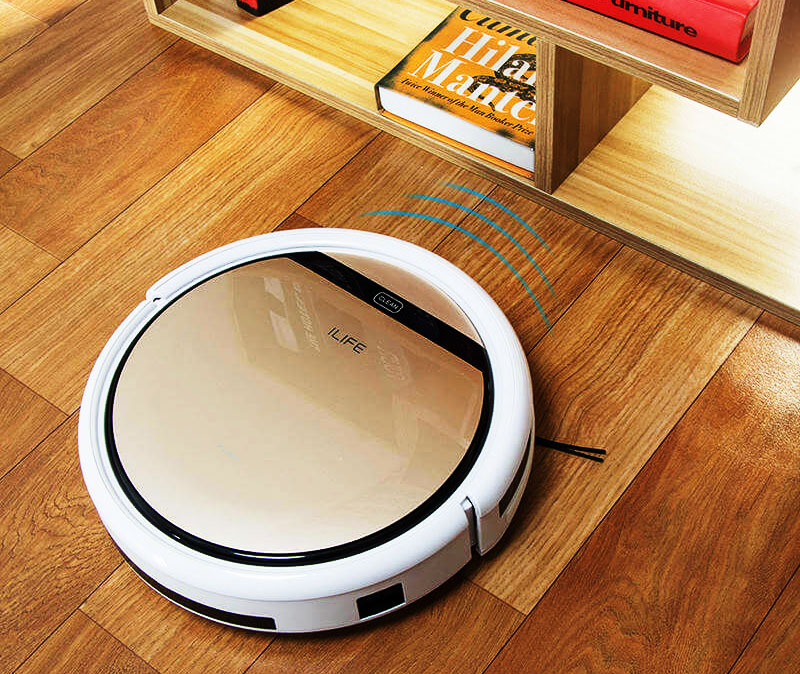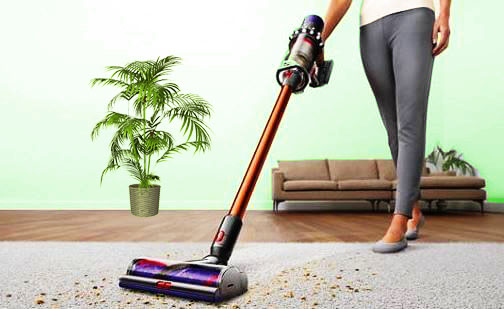How Does a Robot Vacuum Cleaner Work ?
The robot vacuum cleaner is an automated floor cleaner that cleans floors with minimal human supervision. It lessens our chores and makes tidying up the house much easier.

In this article, we will learn how a robot vacuum cleaner works. We will study the technology that drives it and how it gets the machine to do what it does. For this, we will first have to start at the basics and understand the fundamentals of a vacuum cleaner.
Table of Contents
The science behind vacuum cleaning
A vacuum cleaner sucks in debris by creating a partial vacuum at the tip of the inlet. It does this by drawing in air through the suction channel into the cleaner using a motor. As the air moves inwards, an empty space is created at the opposite end of the channel near the inlet tip. This causes the air just outside the tip to rush inside and occupy the space left behind by the exiting air. This is because the air pressure outside the inlet is higher than it is inside.
Also, a property of matter is that it occupies space. So, when a partial vacuum is created near the mouth of the inlet, the air outside gushes in to fill it up and in the process brings in dust and debris. The moving air molecules attract debris through friction and force them into the inlet.
Centrifugal force also plays a role in propelling dust into the machine. The dirt-filled air passes through a filter which traps the debris while the air filters out and is released back into the room. This is the basic mechanism on which all vacuum cleaners work.

How a robot vacuum cleaner works
Now let us look at how a robot vacuum cleaner achieves this task. A robot vacuum cleaner uses a combination of pre-programmed software and built-in intelligence to perform its functions. It has an intuitive capacity and relies on an assortment of sensors to figure out what it needs to do and how it needs to do it.
The sensors help the robot navigate, regulate the air flow and recharge the battery on time. A typical robot vacuum cleaner is made up of the following components, although variations are possible.
- Vacuum cleaner enclosure
- User interface
- Edge sensor
- Cliff sensor
- Obstacle sensor
- Gyroscope sensor
- Piezoelectric sensor
- Laser distance sensor
- Ultrasonic radar sensor
- Wheel sensor
- Infrared camera
- Vacuum
- Vacuum inlet
- Side sweeping brushes
- Main roller brushes
- Multiple motors
- Debris holder
- Obstacle detection bumper
- Wheels
- Battery
- Docking port
- Docking station
- Remote controller
3-stage cleaning mechanism
A robot vacuum cleaner has a 3-stage cleaning system. The spinning side brushes lift loose debris off of the floor and sweep it in the path of the robot. The dual counter-rotating roller brushes pick up the debris and shove it towards the inlet. The vacuum uses its powerful suction to draw in the waste matter and deposits it in the trash holder.
Role of sensors
Sensors are vital for navigation. A robotic cleaner uses its sensory inputs to pick its way around the house and clean every room from wall to wall. There are many kinds of sensors and each performs a specific function. Here are some of the most common sensors and their uses.
Cliff/Drop sensor
This sensor uses vertically down-firing infrared beams to identify sudden drops in the floor. The beams constantly measure the distance to the floor. If the light takes longer to bounce back, the robot surmises that there is a drop or a stairwell ahead, and it must not proceed beyond that point. The device immediately halts and changes its course to avoid a fall.
Obstacle sensors
Obstacle sensors help a robot vacuum cleaner maneuver around furniture, clutter and low-lying wires. It prevents the gadgets from bumping into objects and knocking things over. It also keeps the device from getting entangles in cables and fabric. Some robots have shock-absorbing touch-sensitive bumpers. When the bumper makes contact with a hard surface, the vacuum halts and reroutes itself.
However, changing direction too frequently may leave a lot of places unvacuumed. To avoid this inconvenience, some advanced robot cleaners slow down as they approach an obstacle and gently nudge it to see if it is soft and yields under their touch. If it is a curtain or a bed skirt, it will give way and the gadget will be able to access and vacuum the area underneath it.
Wall/Edge sensors
These sensors help the vacuum map out the layout of the room, avoid collisions and deep-clean wall edges and corners. They provide a straight path for the vacuum to follow. They also help it make its way from one room to another through open doorways.
Piezoelectric sensors
This kind of sensor picks out areas with high concentration of dirt. The sensor consists of a crystal that produces an electric signal when it is struck by dirt particles. When the vacuum rolls over a particularly dirty spot, the sensor gives out electrical impulses and if the impulses exceed a certain threshold, the robot takes it to be a high-dirt area and cleans it more rigorously for a longer period of time.
Wheel sensors
These sensors keep track of wheel rotation and measure the distance travelled by the robot.
Virtual walls
Some robotic cleaners come with virtual wall units which create invisible walls using infrared radiation. You can use these units to virtually barricade certain sensitive areas of the house like the nursery and bathroom. When the robot’s onboard receiver picks up a signal from such a unit, the robot understands that it is not allowed in that direction and promptly changes its course.
Importance of mapping
Most advanced vacuum cleaners come with intelligent navigation systems. There are two kinds of mapping technology. In the first kind, the robot uses an onboard infrared camera to take pictures of the room to know where to go and where not to.
In the second kind, the robot relies on a laser range finder to map out the distance to objects and create a layout of the room to draw up its path. Both the techniques are equally efficient and are known by various names under various brands.
For instance, Roomba 980 calls its camera-based mapping system Vision Simultaneous Localization and Mapping (VSLAM) while the Neato’s Botvac series vacuum calls its laser-based mapping technology LIDAR, short for Light Detection and Ranging.
One big advantage of mapping is that when the robot resumes vacuuming after a recharge, it knows exactly where to pick up from. It remembers the spot it has last cleaned and returns to that spot to start again. This ensures no place is left unvacuumed and gives you an evenly cleaned floor. Mapping also enables the robot to develop an efficient route map to clean intelligently without repetition.
Cleaning modes
Robot vacuum cleaners come with different cleaning modes. The common ones are Spot, Edge, Scheduled and Auto mode. Each mode cleans the surface in a specific manner. In Spot mode, the robot concentrates on a small area and vacuums it with greater intensity.
In Edge mode, it cleans wall edges more thoroughly. In Scheduled mode, you can time future cleaning sessions. The vacuum starts up on its own as per schedule on the set date and hour and starts vacuuming. Auto mode is the standard mode and is meant for regular room-to-room cleaning.
Mopping
Some robot vacuum cleaners mop the floor too. They have special mop pads and a water tank to wipe the floor with water. Mopping is an added advantage. It helps remove tough stains and keeps your floor squeaky clean.
Remote, app and voice control
Depending on the level of sophistication, a robot cleaner may be remote, app and voice-controllable. Most robotic cleaners are accompanied by a remote controller for managing its functions. Many have Wi-Fi and can be controlled via app. An app can show you the places cleaned by the robot and provide you with vital cleaning statistics on a daily basis.
You can customize your vacuuming modes and preset the entire week’s cleaning schedule through an app. High-end robotic vacuums support Alexa and Google Home. They are AI-powered vacuums that respond to voice commands from smart home assistants.
Self-recharging
A robot vacuum cleaner is powered by a built-in rechargeable battery. When the battery runs low, the robot returns to its docking station and recharges itself. Once the charge is up, it goes back to its chores and picks up where it left off.
HEPA filter
Robot vacuum cleaners are fitted with high-efficiency filters like HEPA (High-Efficiency Particulate Arrestant). These filters intercept the incoming dust, hair, pet dander, food particles and other debris, and remove them from the air permanently. The trash is collected in a dirt bag or container for later disposal.
Conclusion
The above are some of the key points you need to know about robot vacuum cleaners. We hope we have been able to bring the important facts to light and answer some of the questions you had regarding robotic cleaners.
Pro Tips : Car vacuum cleaners helps in reducing dust and air polluting particles inside four wheelers. Buy one today.



Pingback: How Exhaust Fan Works? - Fresh Living
Pingback: iLife V5s Pro Robotic Vacuum Cleaner with Mopping Review - Fresh Living